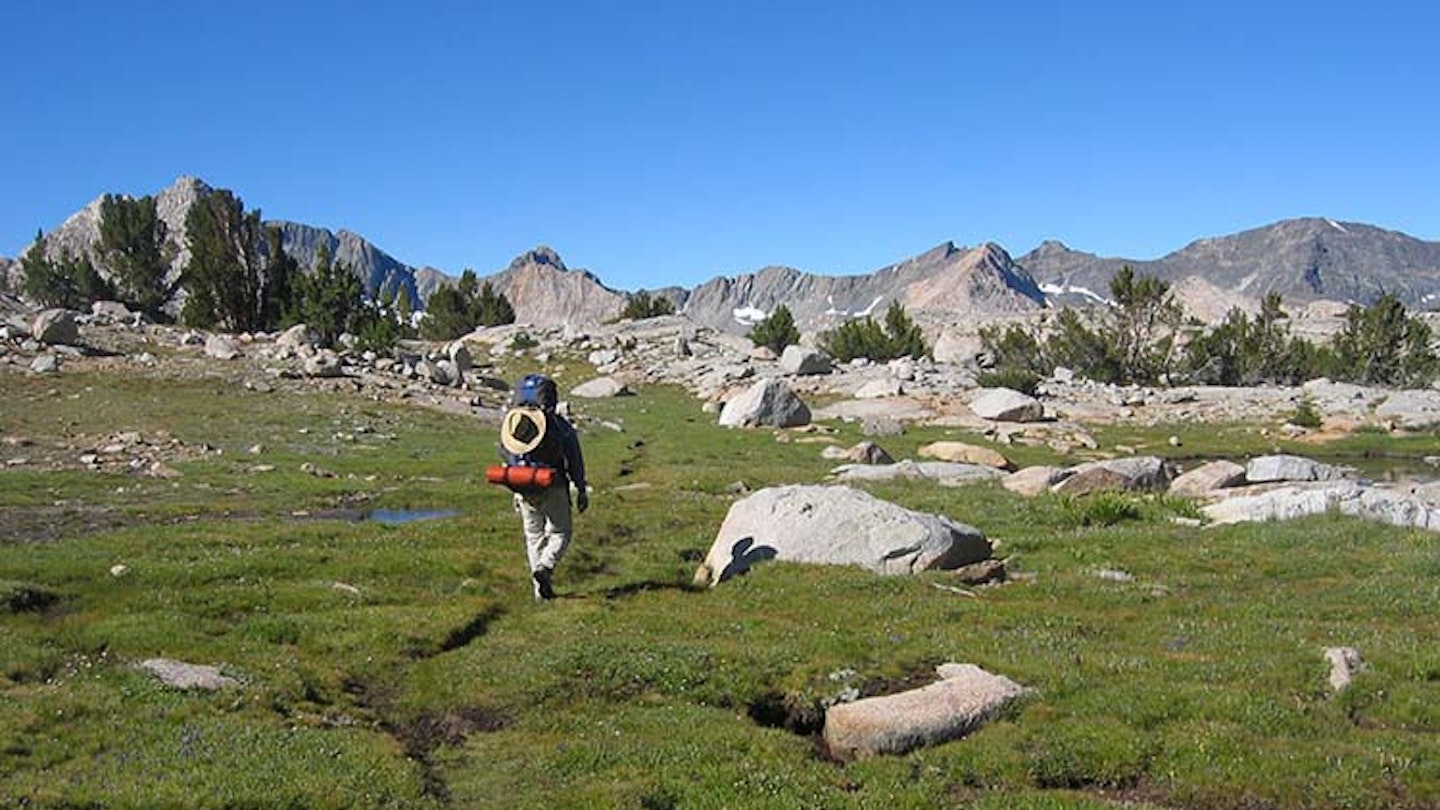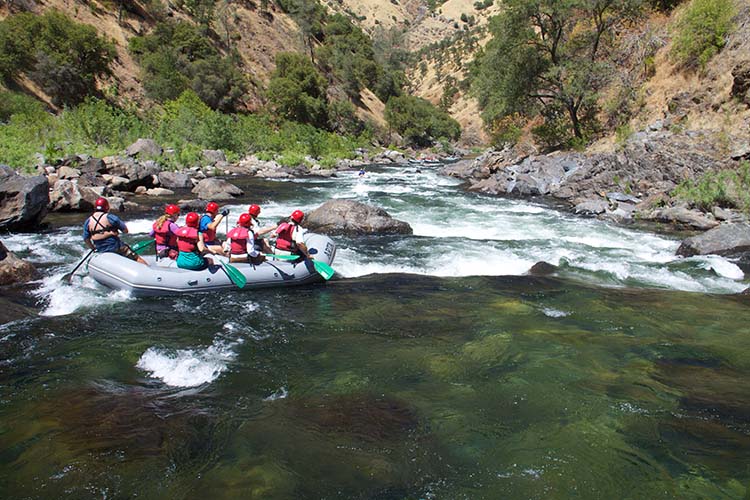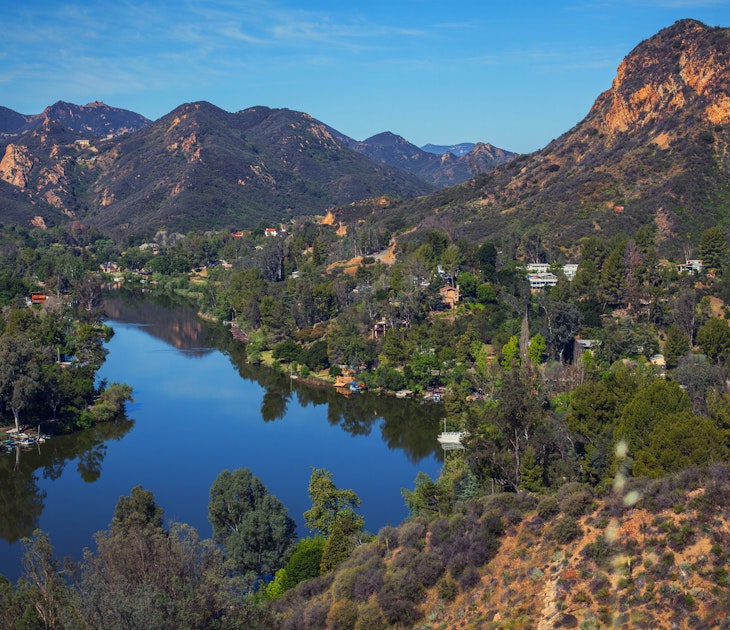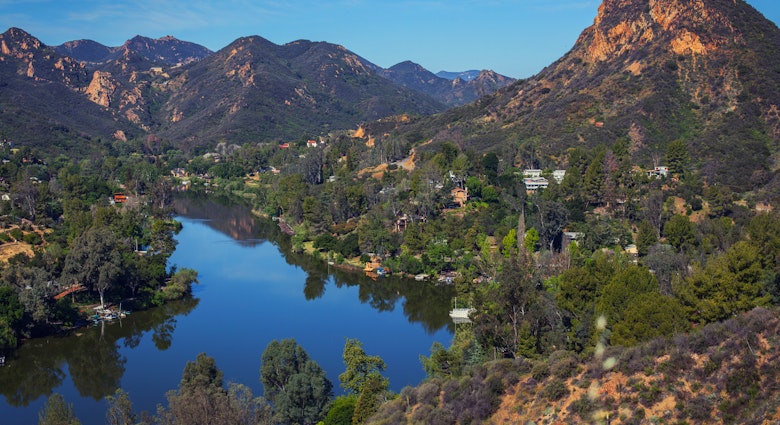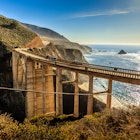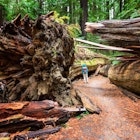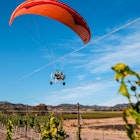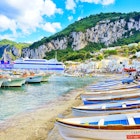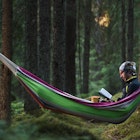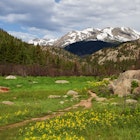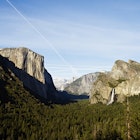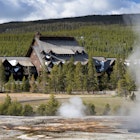The Golden State is an all-seasons outdoor playground. Here you can go hiking among desert wildflowers in spring, swimming in the Pacific kissed by the summer sun, mountain-biking among fall foliage and celebrate winter by schussing through deep powder. For bigger thrills, launch a glider off ocean bluffs, climb granite walls and go bouldering in a wonderland of rocks or hook a kite onto a surfboard and launch yourself over foamy waves. Whatever your adrenaline fix, you’ll find it in California.
Backpacking the John Muir Trail
Hiking the Sierra Nevada. Image by Will Keightley / CC BY-SA 2.0
Load up that pack and connect the dots from the heart of Yosemite National Park to the pinnacle of Mt Whitney (14,505ft). The 211-mile John Muir Trail, which meanders along the Merced River through oak and pine forests, goes up and over six Sierra Nevada passes. It follows the daunting 2650-mile Pacific Crest National Scenic Trail (PCT; www.pcta.org), which extends from Canada to Mexico. The province of experts, these trails can be a lifetime achievement for those who manage to hike the entire distance, but many people choose to conquer them in smaller, more manageable sections.
Rock climbing in Yosemite Valley
Wall prep in Yosemite. Image by Maria Ly / CC BY-SA 2.0
With its sheer spires, polished domes and near-vertical walls, Yosemite is no less than the world’s holy grail of rock. Climbers can tackle the monumental 7569ft El Capitan, one of the world’s largest monoliths. The main climbing season runs from April to October. Most climbers stay at Camp 4 near El Capitan, especially in spring and fall. Come summer, many relocate to gentler, high-elevation Tuolumne Meadows, where temperatures are cooler and there’s an abundance of glacially polished granite domes. Climbers looking for partners post notices on bulletin boards at either campground.
If you’re new to climbing or want to build on your technique, hit up Yosemite Mountaineering School. They offer topflight instruction for novice to advanced rock hounds, plus guided climbs and equipment rental. All-day group classes for beginners are $148 per person.
Sea kayaking and whale-watching in the Channel Islands
Kayaking the Channel Islands. Image by LightHart / CC BY 2.0
Imagine hiking, kayaking, scuba diving, camping and whale-watching, all amid a remote, protected landscape. Rich in unique species of flora and fauna, tide pools and kelp forests, the prized Channel Islands are home to 145 species found nowhere else in the world, earning them the nickname ‘California’s Galapagos.’
Sea kayaking is a fantastic way to see the islands, especially in early fall when the fog clears and conditions are ideal. Winter can be stormy, but it’s also great for spotting whales and other wildlife.
Snorkeling or scuba diving at La Jolla
San Diego’s stunning stretch of coastline offers some of the state’s best and most accessible diving and snorkeling. La Jolla Cove attracts snorkelers, while La Jolla Underwater Park is a great place for beginning divers. With an average depth of 20ft, these 6000 acres of look-but-don’t-touch underwater real estate are home to the bright orange garibaldi, California’s protected state fish. Further out, you’ll see forests of giant kelp and the 100ft-deep La Jolla Canyon.
Look for the white buoys off shore from Point La Jolla north to Scripps Pier that mark this protected zone. A number of commercial outfits teach scuba courses, sell or rent equipment, fill tanks and run boat trips to nearby wrecks and islands.
Surfing Mavericks, Santa Cruz or Malibu
California comes fully loaded with easily accessible world-class surf spots. Santa Cruz is incredibly popular, especially at experts-only Steamer Lane and beginners’ Cowell’s. Half Moon Bay’s Mavericks is world-famous for serious big-wave surfing, topping 50ft when the powerful winter swells arrive. Malibu’s spectacular 27-mile stretch of coast is home to the famous Surfrider Beach, a clean right break that just gets better with bigger waves.
The largest swells arrive along the coast during late fall and winter. May and June are generally the flattest months, although they bring warmer water.
White-water rafting in Gold Country or the Sierra Nevada
Rafting the Tuolumne River. Image by Zachary Collier / CC BY 2.0
California has dozens of kick-ass rivers, and feeling their surging power is like taking a thrilling ride on nature’s rollercoaster. The South Fork of the American River is ideal for beginners looking to get their feet wet, while the more challenging Middle and North Forks carve through deep gorges in the Gold Country.
Starting in the wilds of Yosemite National Park, the Tuolumne River offers some notorious white-knuckle rapids for the adventurous, including experts-only Cherry Creek. This legendary nine-mile stretch offers nearly nonstop Class IV to V+ rapids marked by narrow shoots, huge boulders, sheer drops, ledges and vertical holes.
California’s white-water rafting season kicks off in April. Typically, the Tuolumne River runs into September.
